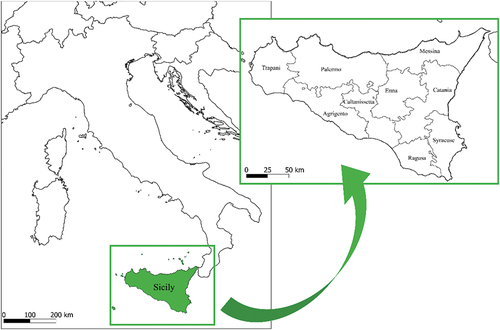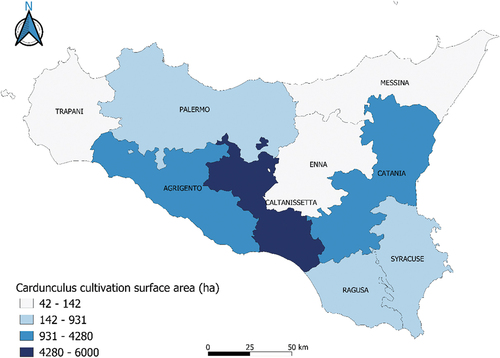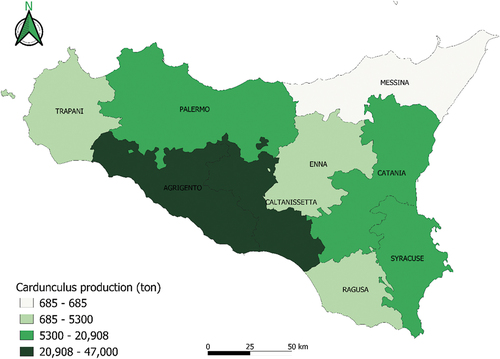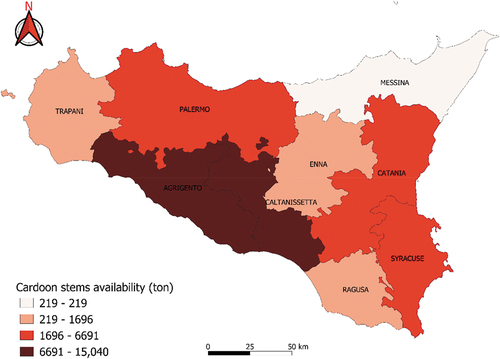Figures & data
Table 1. Chemical composition of cardoon fibres
Table 2. Mechanical properties of most common vegetable fibres (Thyavihalli Girijappa et al. Citation2019)
Table 3. Italian cultivated area for horticultural crops and Cardunculus cultivation (ha)
Table 4. Italian production of horticultural crops and Cardunculus cultivation (t)
Figure 5. Cardoon stems distribution. (a) Polygon centroid for developing heatmaps. (b) Heatmap distribution based on the computed cardoon stem production.
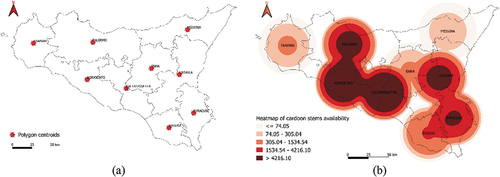
Figure 6. Distribution within Sicily region of the recyclable sheep wool protein-based fibres as potentially reinforcements for bio-composite material.
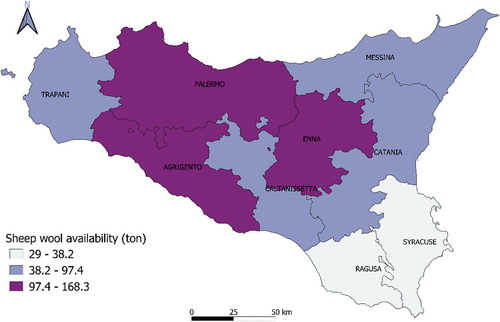
Figure 7. Distribution within Sicily region of both recyclable sheep wool and cardoon stem cellulose-based fibres as potentially reinforcements for bio-composite material.


